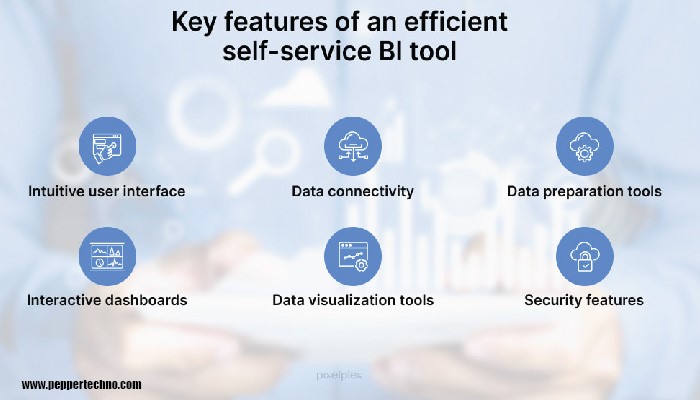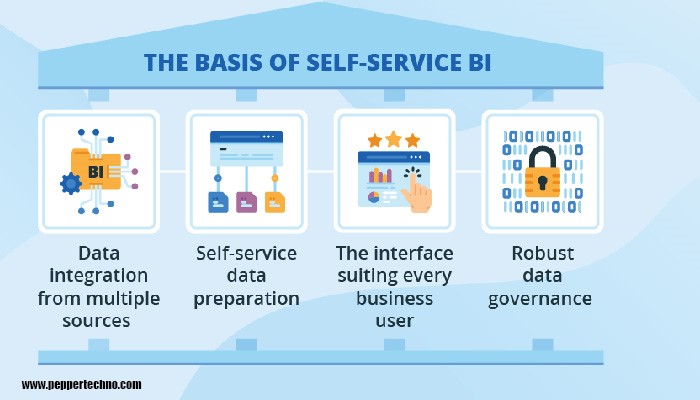Empowering Decision-Making: Unveiling the Power of Self Service BI Tools
In the fast-paced business landscape of today, data is undoubtedly the driving force behind informed decision-making. As organizations navigate through vast amounts of information, the need for a streamlined and efficient approach to data analysis becomes paramount. This is where Self Service BI tools step into the spotlight, offering a user-friendly and agile solution to empower individuals across various departments to harness the power of data without relying on IT specialists. In this article, we will delve into the world of Self Service BI Tools, exploring their features, benefits, and the transformative impact they have on decision-making processes.

Understanding Self-Service BI
Democratizing Data Access
Self Service BI Tools are designed to democratize data access within an organization. Traditionally, data analysis was confined to IT departments, creating bottlenecks and delays in obtaining crucial insights. Self Service BI Tools break down these barriers, allowing non-technical users to access and analyze data independently. This democratization of data empowers business users, giving them the ability to make informed decisions in real-time.
User-Friendly Interfaces
One of the key features of Self Service BI Tools is their user-friendly interfaces. These tools are built with the end-user in mind, ensuring that individuals with varying levels of technical expertise can navigate and utilize them effectively. Intuitive dashboards, drag-and-drop functionalities, and interactive visualizations make the data analysis process accessible to a broader audience, reducing the learning curve traditionally associated with complex business intelligence tools.
Benefits of Self Service BI Tools
Agility and Flexibility
Self Service BI Tools offer unparalleled agility and flexibility in data analysis. Business users can create and modify reports on the fly, responding to changing business needs without waiting for IT support. This agility enables organizations to adapt quickly to market dynamics, gaining a competitive edge by making informed decisions based on the most up-to-date information.
Cost-Efficiency
Traditional BI solutions often come with hefty price tags, not only in terms of software licensing but also in the resources required for IT support and maintenance. Self Service BI Tools reduce these costs by minimizing the dependency on IT specialists. With users empowered to handle their data analysis, organizations can allocate IT resources more efficiently, focusing on strategic initiatives rather than routine reporting tasks.
Improved Decision-Making
The democratization of data access and the user-friendly nature of Self Service BI Tools contribute to improved decision-making across all levels of an organization. With real-time insights at their fingertips, decision-makers can identify trends, opportunities, and potential risks swiftly. This data-driven decision-making approach enhances overall business intelligence and helps organizations stay ahead in an ever-evolving marketplace.
Challenges and Considerations
Data Governance and Security
While Self Service BI Tools offer autonomy to end-users, it is crucial to address concerns related to data governance and security. Organizations must establish robust policies and procedures to ensure the integrity and confidentiality of sensitive information. Implementing access controls, encryption, and monitoring mechanisms becomes paramount to strike a balance between autonomy and security.
Training and Support
Despite their user-friendly interfaces, Self Service BI Tools require adequate training to maximize their potential. Organizations should invest in comprehensive training programs to equip users with the necessary skills for effective data analysis. Additionally, a robust support system should be in place to address any technical issues and provide guidance as users navigate the complexities of the tool.
Case Studies: Transformative Impact of SSBI
Company A: Accelerating Time-to-Insight
Company A, a mid-sized manufacturing firm, implemented a self-service BI tool to streamline their reporting processes. Previously, generating monthly reports required extensive IT involvement, causing delays in decision-making. With the adoption of SSBI, department heads gained the ability to create customized reports independently. This resulted in a significant reduction in time-to-insight, allowing the company to respond swiftly to market changes and optimize its production processes.
Company B: Cost Savings and Resource Optimization
In the financial sector, Company B faced challenges with the cost and resource allocation associated with their traditional BI solution. By transitioning to a self-service BI tool, the organization experienced substantial cost savings. The IT department could reallocate resources to focus on strategic projects, while business users efficiently handled their reporting needs. This shift not only improved cost-efficiency but also enhanced overall organizational agility.
Conclusion
Self-Service Business Intelligence tools have emerged as a game-changer in the realm of data analysis. By democratizing data access, promoting agility, and empowering users, these tools enable organizations to extract maximum value from their data assets. While challenges such as data governance and training must be addressed, the transformative impact on decision-making processes and cost-efficiency makes the adoption of Self Service BI Tools a strategic imperative for businesses looking to thrive in the data-driven era. Embracing the power of self-service BI is not just a technological evolution; it’s a paradigm shift towards a more agile, informed, and competitive future.



